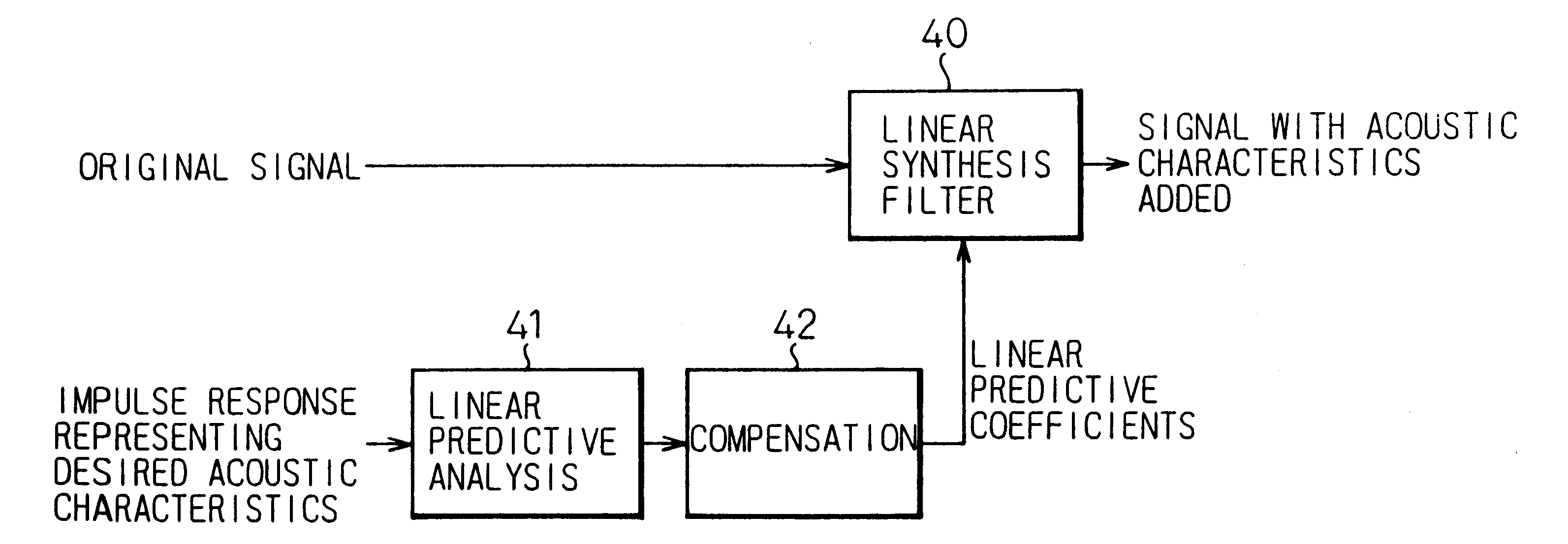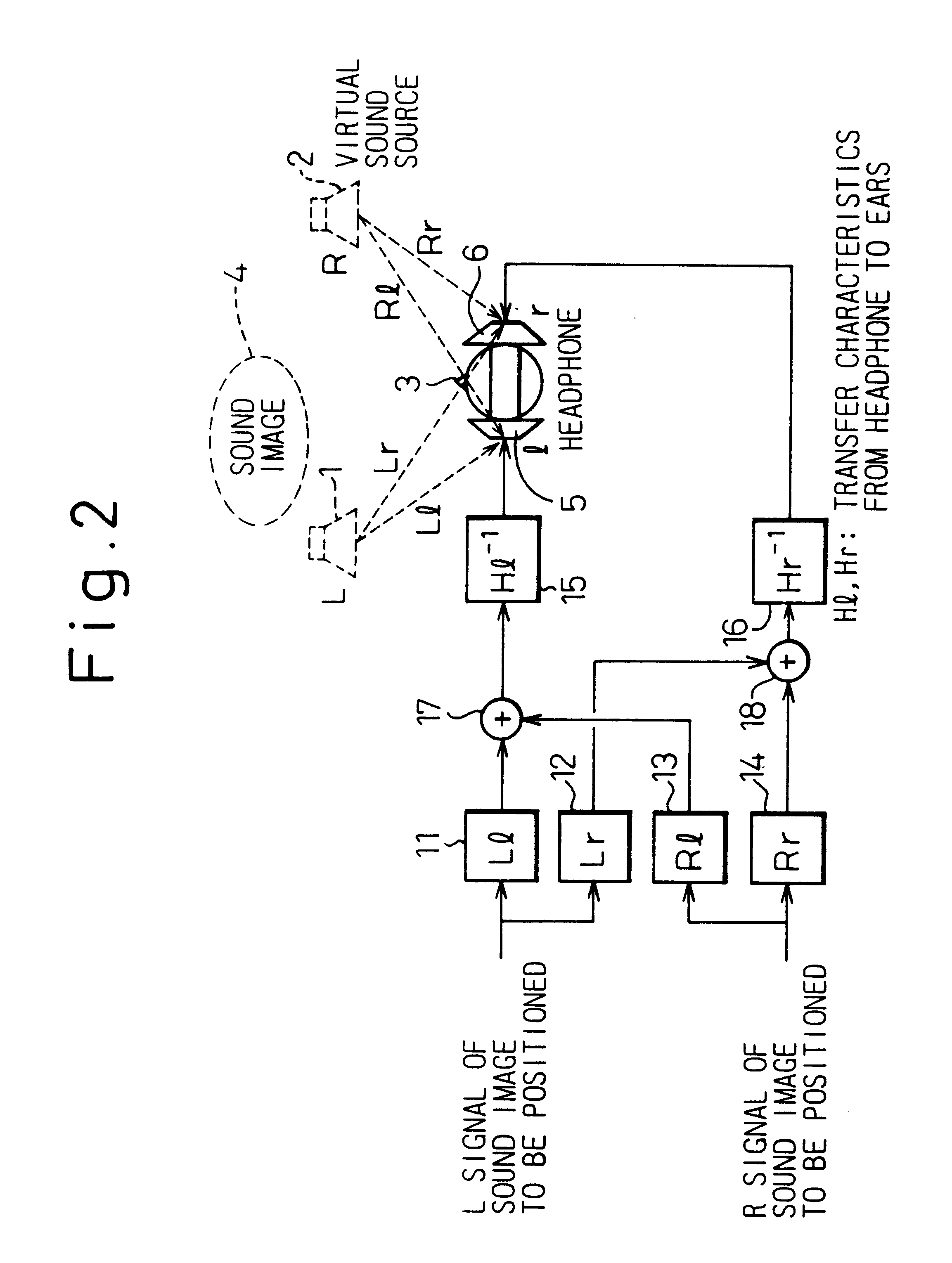Three-dimensional acoustic processor which uses linear predictive coefficients
a three-dimensional acoustic processor and predictive coefficient technology, applied in the field of three-dimensional acoustic processors, can solve the problems of insufficient processing capacity, difficult to solve the above-mentioned problems, and impede the reduction of cost and the achievement of a physically compact circui
- Summary
- Abstract
- Description
- Claims
- Application Information
AI Technical Summary
Benefits of technology
Problems solved by technology
Method used
Image
Examples
Embodiment Construction
Before describing the present invention, the technology related to the present invention will be described, with reference made to the accompanying drawings FIG. 1 through FIG. 10B.
FIG. 1 shows the case of listening to a sound image from a two-channel stereo apparatus in the past.
FIG. 2 shows the basic block diagram circuit configuration which achieves an acoustic space that is equivalent to that created by the headphone in FIG. 1.
In FIG. 1, the transfer characteristics for each of the acoustic space paths from the left and right speakers (L, R) 1 and 2 to the left and right ears (l, r) of the listener 3 are expressed as Ll, Lr, Rr, and Rl. In FIG. 2, in addition to the transfer characteristics 11 through 14 of each of the acoustic space paths, the inverse characteristic (Hl.sup.-1 and Hr.sup.-1) 15 and 16 of each of the characteristics from the left and right earphones of headphone (HL and HR) 5 and 6 to the left and right ears are added.
As shown in FIG. 2, by adding the above-note...
PUM
 Login to View More
Login to View More Abstract
Description
Claims
Application Information
 Login to View More
Login to View More - R&D
- Intellectual Property
- Life Sciences
- Materials
- Tech Scout
- Unparalleled Data Quality
- Higher Quality Content
- 60% Fewer Hallucinations
Browse by: Latest US Patents, China's latest patents, Technical Efficacy Thesaurus, Application Domain, Technology Topic, Popular Technical Reports.
© 2025 PatSnap. All rights reserved.Legal|Privacy policy|Modern Slavery Act Transparency Statement|Sitemap|About US| Contact US: help@patsnap.com



